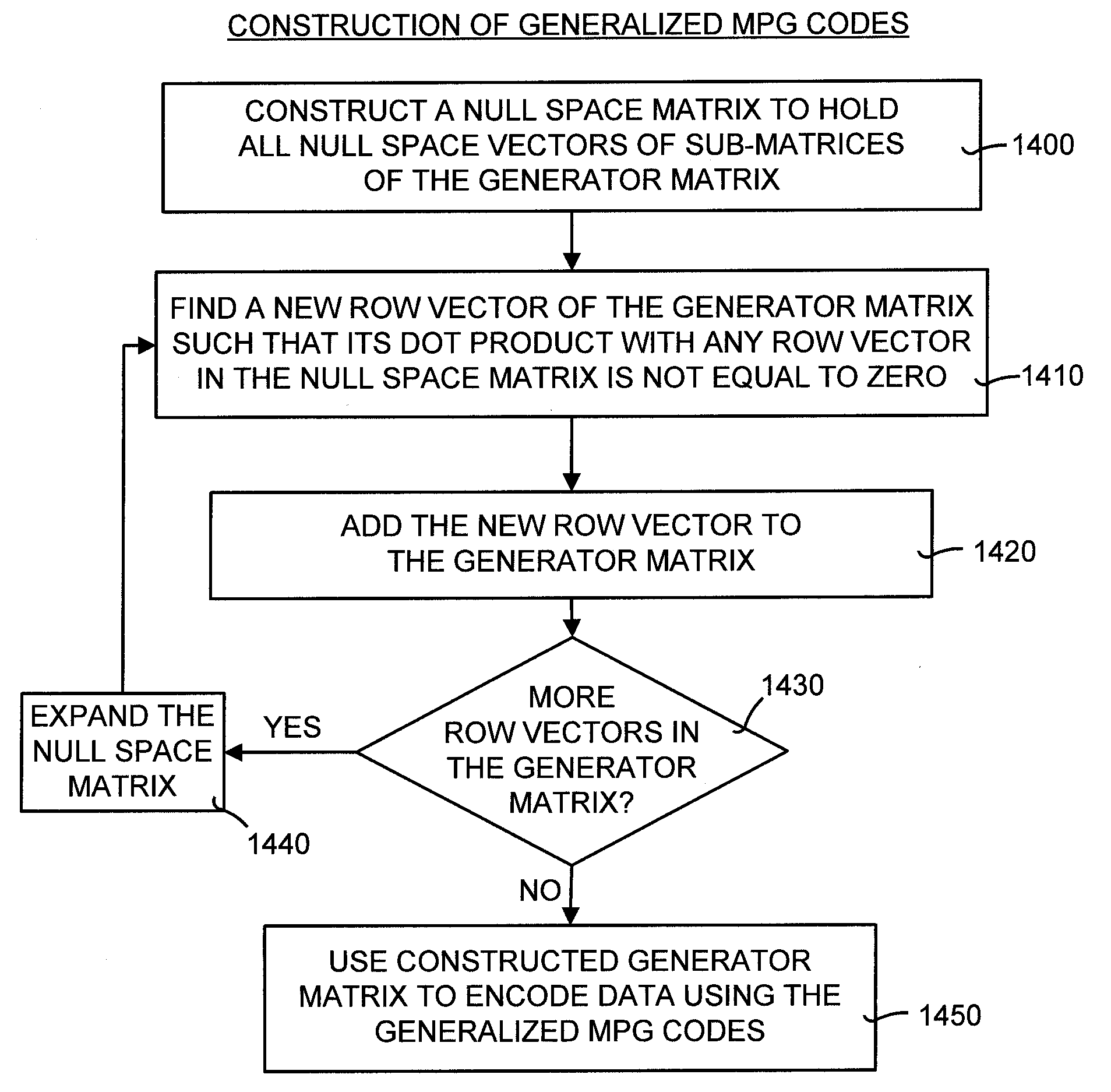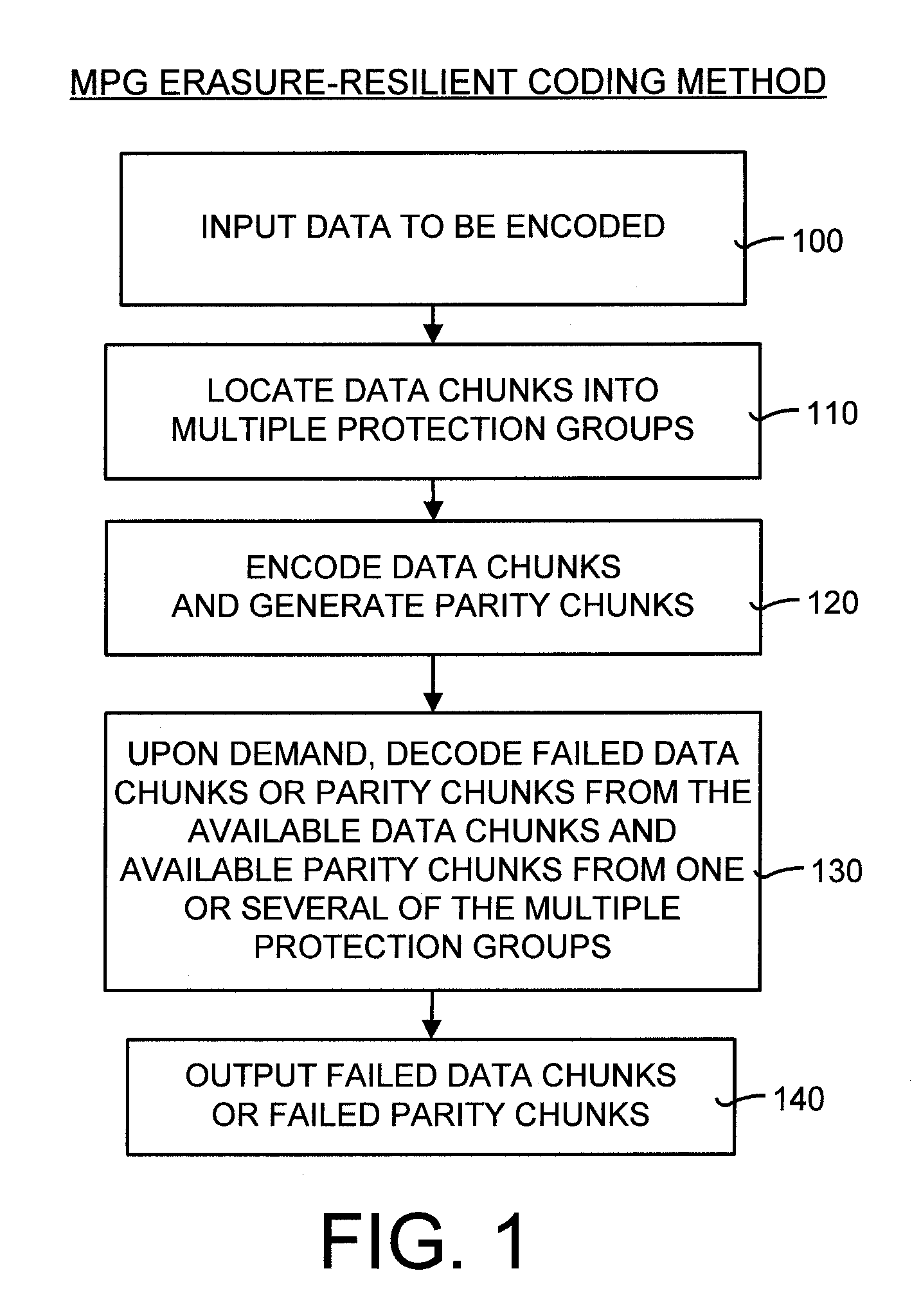Multiple protection group codes having maximally recoverable property
a protection group and property technology, applied in the direction of code conversion, coding, electrical equipment, etc., can solve the problems of data reliability requirements that are beyond the capability of any single storage component, individual components of a massive distributed storage system may fail, and differ significantly in terms of storage cost and access overhead. , to achieve the effect of reducing access overhead
- Summary
- Abstract
- Description
- Claims
- Application Information
AI Technical Summary
Benefits of technology
Problems solved by technology
Method used
Image
Examples
second embodiment
[0063]FIG. 8 illustrates an example of this type of assignment. For G′(e) to have rank k, it is necessary that there exists an assignment such that all the diagonal entries of G′(e) are nonzero. This is defined as a size k matching in G′(e). In other words, that G′(e) has rank k implies a size k matching. This necessary condition is equivalent to the condition discussed below based on full size matching in a Tanner graph, which is the detection technique.
[0064]In FIG. 8 it should be noted that the 3 parity rows assigned to the 3 lost data rows corresponding to data symbols in Ah must belong to ̂(Ah), a necessary condition for e to be recoverable is that there exists an atomic assignment of remaining parity rows in ̂(Ah) to Ah, such that the number of lost data symbols in Ah is equal to the number of assigned parity symbols. The set containing all such e is defined as a Maximally Recoverable Set (MRS) for Ω, denoted by E(Ω).
[0065]Assume for e, there are l1, . . . , ll lost data symbo...
first embodiment
[0074]The second step is to construct a matrix U that holds all null space vectors. There are two embodiments for this second step. The first embodiment makes use of the fact that each added gm should be capable of recovering all recoverable erasure patterns of Gm. Therefore, gm must satisfy that any submatrix S in Gm that has rank k−1 can be combined with gm to form a generator submatrix that has full rank k. All matrices with rank smaller than k−1 correspond to a non-recoverable erasure pattern, and does not need to be considered by the construction. Thus, gm should not be contained in the space spanned by S: span(S), for all S with rank(S)=k−1.
[0075]Because S is of rank k−1, it is enough to find a vector u that is perpendicular to span(S). Mathematically, u spans the null space of S. The condition that gm is not an element of span(S) is equivalent to saying that u·gm≠0. Assume that U is a matrix that holds all null space vectors of all subspaces S having rank k−1. When no parity ...
PUM
 Login to View More
Login to View More Abstract
Description
Claims
Application Information
 Login to View More
Login to View More - R&D
- Intellectual Property
- Life Sciences
- Materials
- Tech Scout
- Unparalleled Data Quality
- Higher Quality Content
- 60% Fewer Hallucinations
Browse by: Latest US Patents, China's latest patents, Technical Efficacy Thesaurus, Application Domain, Technology Topic, Popular Technical Reports.
© 2025 PatSnap. All rights reserved.Legal|Privacy policy|Modern Slavery Act Transparency Statement|Sitemap|About US| Contact US: help@patsnap.com



